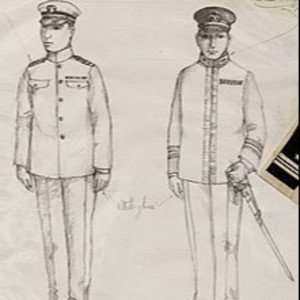Costume Design

Introduction
Perhaps more than any other technical element of a production, costumes make the character. Early on, actors are curious to know what they’ll be wearing, often so they can begin rehearsals in the right shoes. The process of costume design is multi-faceted and utilizes many skill sets and collaboration with other designers. With an eye for history and style, costume design creates the world of the play through the presentation of the actors. This guide will provide the process and terminology of costume design and how it can be applied to any show.
Terminology
- Color Coding: Using color cues to establish relationships between characters.
- Color Psychology: The impact of color on emotion and behavior.
- Costume Plot: A document that details the required costume pieces for each character in a production.
- Croquis: Body templates designers use to create consistency and proportion in their renderings.
- Fabric: The material of costumes.
- Line: One of the primary elements of visual design that helps determine the silhouette of a costume.
- Mass: One of the primary elements of visual design that helps determine the silhouette of a costume.
- Movement: One of the primary elements of visual design that helps determine how a costume will move with an actor.
- Rendering: A detailed drawing, usually in color, of a technical design.
- Silhouette: The shape and outline of a costume.
- Swatch Book: A selection of colors and fabrics that a designer can reference to make decisions in design.
- Texture: The weave and density of the fabric, as well as any patterns on it.
Context & Analysis
When the costume designer begins, the first thing they must do is read the script, sometimes several times. They’ll take notes on the setting, season, and events. They’ll also analyze the characters to better understand their actions, objectives, and demographics (gender, age, wealth status, etc.). Following this first reading, the costume designer will meet with the
to read our learning module for Costume Design and to unlock other amazing theatre resources!StageAgent Resources
StageAgent Sections
Guides
Show Guides:
Career Guide:
Tech Guide:
Performing Skills:
Blog Posts
Links & Media
Quizzes

Cindi Calhoun
Theatre teacher, director, writer, and seamstress